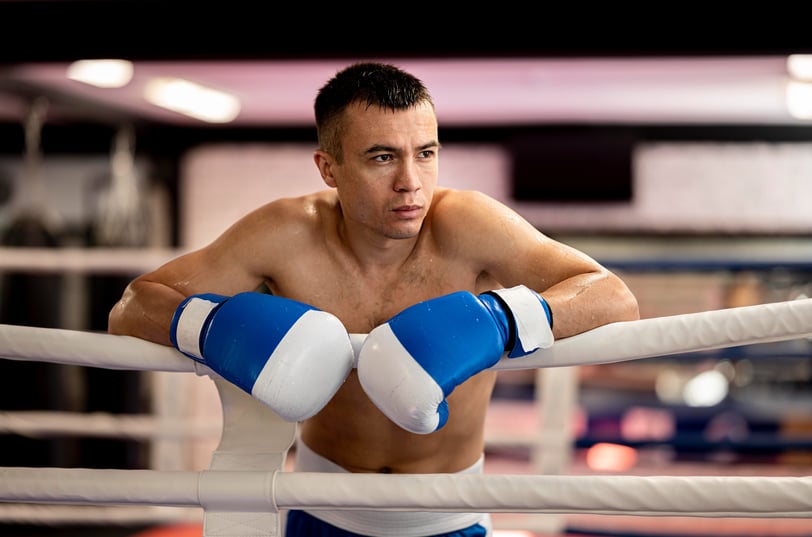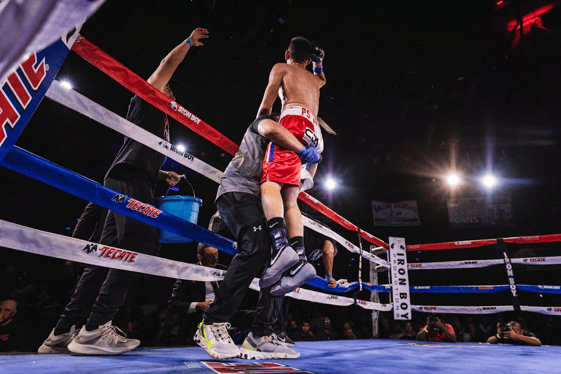10 Common Injuries in Boxing (And How to Prevent Them)
Discover the most common injuries in boxing, from concussions to sprains, and learn practical tips to stay safe in the ring. Protect your health while pursuing your passion!
2/13/20253 min read


Boxing is a thrilling sport that tests strength, agility, and mental resilience. However, its physical demands also make athletes prone to injuries. Whether you’re a seasoned fighter or a beginner, understanding the common injuries in boxing is crucial for safeguarding your health. In this guide, we’ll break down the top injuries boxers face, their causes, symptoms, and actionable prevention strategies. Let’s dive in!
Understanding the Risks: Why Boxing Injuries Happen
Boxing involves repetitive punches, rapid movements, and high-impact collisions, all of which strain the body. Common factors leading to injuries include:
Poor technique
Overtraining
Inadequate protective gear
Lack of warm-ups
By addressing these risks, fighters can significantly reduce their injury odds.
1. Concussions and Traumatic Brain Injuries (TBI)
Causes: Direct blows to the head from hooks, jabs, or uppercuts.
Symptoms: Dizziness, confusion, headaches, and memory issues.
Treatment: Immediate rest, medical evaluation, and gradual return to activity.
Prevention:
Always wear approved headgear.
Strengthen neck muscles to absorb impact.
Avoid sparring without proper supervision.
2. Cuts and Facial Bruises
Causes: Accidental elbows, headbutts, or punches splitting the skin.
Symptoms: Bleeding, swelling, and visible abrasions.
Treatment: Clean cuts with antiseptic, use butterfly bandages, or seek stitches for deep wounds.
Prevention:
Apply petroleum jelly to reduce friction.
Use quality gloves with thumb attachment.
3. Shoulder Injuries (Rotator Cuff Tears)
Causes: Overhead punches or repetitive shoulder rotation.
Symptoms: Pain when lifting the arm, weakness, and limited mobility.
Treatment: Physical therapy, rest, or surgery for severe cases.
Prevention:
Warm up shoulders with dynamic stretches.
Incorporate resistance band exercises.
4. Boxer’s Fracture (Hand Fracture)
Causes: Punching with improper form or hitting hard surfaces (e.g., an opponent’s elbow).
Symptoms: Swelling, pain in the pinky knuckle, and difficulty moving the hand.
Treatment: Splinting, casting, or surgery for misaligned bones.
Prevention:
Wrap hands properly with gauze and tape.
Use well-padded gloves.
5. Rib Injuries
Causes: Body shots or accidental impacts during clinches.
Symptoms: Sharp pain when breathing or moving.
Treatment: Rest, ice, and avoiding strenuous activity.
Prevention:
Strengthen core muscles.
Practice defensive blocking techniques.
6. Eye Injuries (Corneal Abrasions, Retinal Detachment)
Causes: Pokes, jabs, or direct trauma.
Symptoms: Blurred vision, redness, or sensitivity to light.
Treatment: Urgent medical care to prevent permanent damage.
Prevention:
Wear protective eyewear during training.
Keep nails trimmed to avoid accidental scratches.
7. Sprains and Strains
Causes: Twisting ankles or overextending muscles during footwork.
Symptoms: Swelling, bruising, and tenderness.
Treatment: RICE method (Rest, Ice, Compression, Elevation).
Prevention:
Focus on agility drills to improve balance.
Wear supportive footwear.
8. Tennis Elbow (Lateral Epicondylitis)
Causes: Repetitive punching motion straining forearm tendons.
Symptoms: Elbow pain radiating to the wrist.
Treatment: Anti-inflammatory medication and rest.
Prevention:
Strengthen forearm muscles with grip exercises.
Avoid overtraining.
9. Jaw Injuries (Dislocation or Fracture)
Causes: Powerful uppercuts or hooks to the chin.
Symptoms: Difficulty chewing, misaligned jaw, or swelling.
Treatment: Immediate medical realignment or surgery.
Prevention:
Practice head movement drills.
Wear a custom-fitted mouthguard.
10. Overuse Injuries (Tendinitis, Stress Fractures)
Causes: Repetitive motions without adequate recovery.
Symptoms: Chronic pain in wrists, elbows, or shins.
Treatment: Reduce training intensity, cross-train, and ice.
Prevention:
Follow a structured training schedule with rest days.
Listen to your body’s warning signs.
How to Prevent Boxing Injuries: Pro Tips
Warm-Up Properly: Spend 15–20 minutes on dynamic stretches and shadowboxing.
Invest in Quality Gear: Prioritize gloves, headgear, and mouthguards from reputable brands.
Master Technique: Work with a coach to refine form and footwork.
Strength Train: Focus on core, neck, and shoulder stability.
Stay Hydrated and Nourished: Dehydration weakens muscles and increases injury risk.
Recovering from Boxing Injuries
Rest: Allow adequate healing time; returning too soon worsens injuries.
Physical Therapy: Rebuild strength and mobility post-injury.
Mental Health: Stay positive—injuries are setbacks, not dead ends.
FAQs About Boxing Injuries
Q: How long should I rest after a concussion?
A: Follow a doctor’s advice, typically 1–3 months depending on severity.
Q: Can hand wraps prevent fractures?
A: Yes! They stabilize bones and reduce impact on joints.
Q: Is boxing safe for beginners?
A: With proper coaching and gear, risks are minimized.
Conclusion
While boxing injuries are common, they’re not inevitable. By prioritizing safety, technique, and recovery, you can enjoy the sport while minimizing risks. Remember: Every champion respects their body’s limits. Stay informed, stay protected, and keep fighting smart!








Quality
Manufacturing top-notch combat sports equipment for businesses worldwide.
Menu
Accessible
© 2024. All rights reserved.


